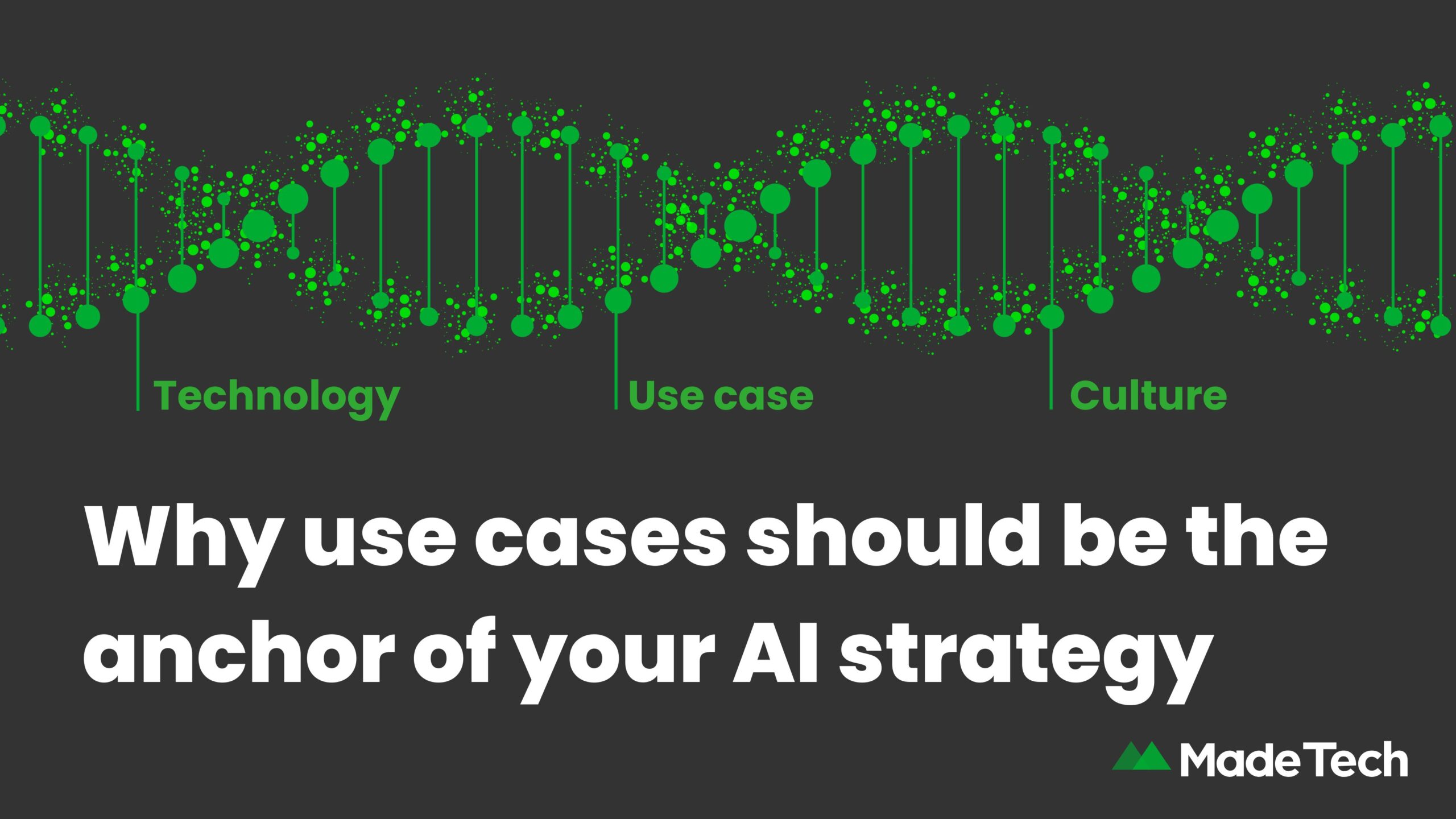In the rush to adopt AI, it’s easy to get distracted by the tech itself. The platforms, the models, the promise of automation. But the truth is, successful AI adoption doesn’t start with tools. It starts with clear, relevant use cases.
In our work with public sector clients, we’ve found that identifying the right use cases isn’t just helpful. It’s absolutely critical. The organisations that succeed with AI are the ones that begin by asking: what problem are we solving, and is AI the answer?
Why use cases matter as much as tech specs
AI adoption often fails when it’s driven by hype, not need. Departments rush to implement complex models without a solid understanding of what they’re trying to achieve. This results in stalled projects and wasted investment.
Our whitepaper Laying the groundwork for AI outlines common archetypes we see in public sector organisations. One of the most damaging? The ‘over-ambitious use case’, where aspirations outpace the organisation’s data and infrastructure readiness. These projects rarely succeed, because they lack a firm foundation built on actual needs, leading to not only high development costs but also inflated operational costs.
By contrast, when organisations start with the right use cases aligned to their goals and scaled to their capabilities, they lay the groundwork for sustainable AI adoption.
Use cases drive AI readiness
Choosing the right use case doesn’t just help you prove AI’s value. It drives maturity in the other areas that matter for long-term success: technology and culture.
In one example from a local government client, we were brought in to rebuild their data platform following a cyber attack. While the initial focus was on restoring technology, the new platform introduced capabilities the organisation hadn’t previously had. This created the need for new skills and training causing a shift in culture. And, as those skills grew, teams started to spot and implement new AI-ready use cases that were previously out of reach. One investment triggered change across all three pillars of data maturity: tech, culture and use case.
That’s how AI success happens. Not in isolation, but by letting use cases guide the journey.
The helical model: how to unlock momentum
The helical model described in our whitepaper reflects the real-world interplay between technology, use case and culture. Rather than treating them as silos, we see how investment in one area creates the right kind of tension to drive growth in the others.

A great example of this came from our work with the Department for Business and Trade (DBT). The project started not with technology, but with a clear use case. Their teams were struggling with an in-house CRM system that didn’t meet their operational needs. Data was fragmented, reporting was inconsistent and the system was difficult to maintain. The CRM had evolved over time into a complex patchwork and staff lacked confidence in its outputs.
Rather than jumping straight to a tech fix, we worked closely with stakeholders to understand what outcomes they needed. Where their pain points were and what success would look like. That exploration revealed significant gaps in the underlying technology and infrastructure, prompting a shift to upgrade those systems.
What started as a use case conversation quickly became a strategic driver for broader digital change. The new platform was built not just to replace the old CRM, but to support better data practices, encourage adoption and enable future AI use cases. In effect, the right use case didn’t just solve the one problem. It created the momentum to modernise the technology stack and begin building a more data-savvy culture.
If AI is the answer, what’s the question?
Starting with a use case ensures your investment is grounded in a real-world challenge – not just the promise of future capability.
It helps you answer the essential questions:
What data do we need to solve this?
What skills are missing?
What would a successful outcome look like?
Is AI the right tool or is something simpler more appropriate?
By delivering value quickly and scaling from there, you avoid overengineering and increase your odds of long-term success.
Use cases make AI real
Ultimately, AI is only useful if it solves the right problems. That’s why we always advise clients to start with the mission. Focus on real challenges, identify the most valuable use cases and let them guide your strategy.
As James West notes in his blog on building AI readiness in public safety,
Using AI in public safety to solve practical, everyday challenges, like improving police response times or monitoring offenders, can drive real-world change.”
Treating use cases as a continual cycle of learning, not a tick box exercise is what separates short-term AI pilots from long-term, sustainable success.
That’s how you go from AI ambition to AI impact.
The post Why use cases should be the anchor of your AI strategy appeared first on Made Tech.



